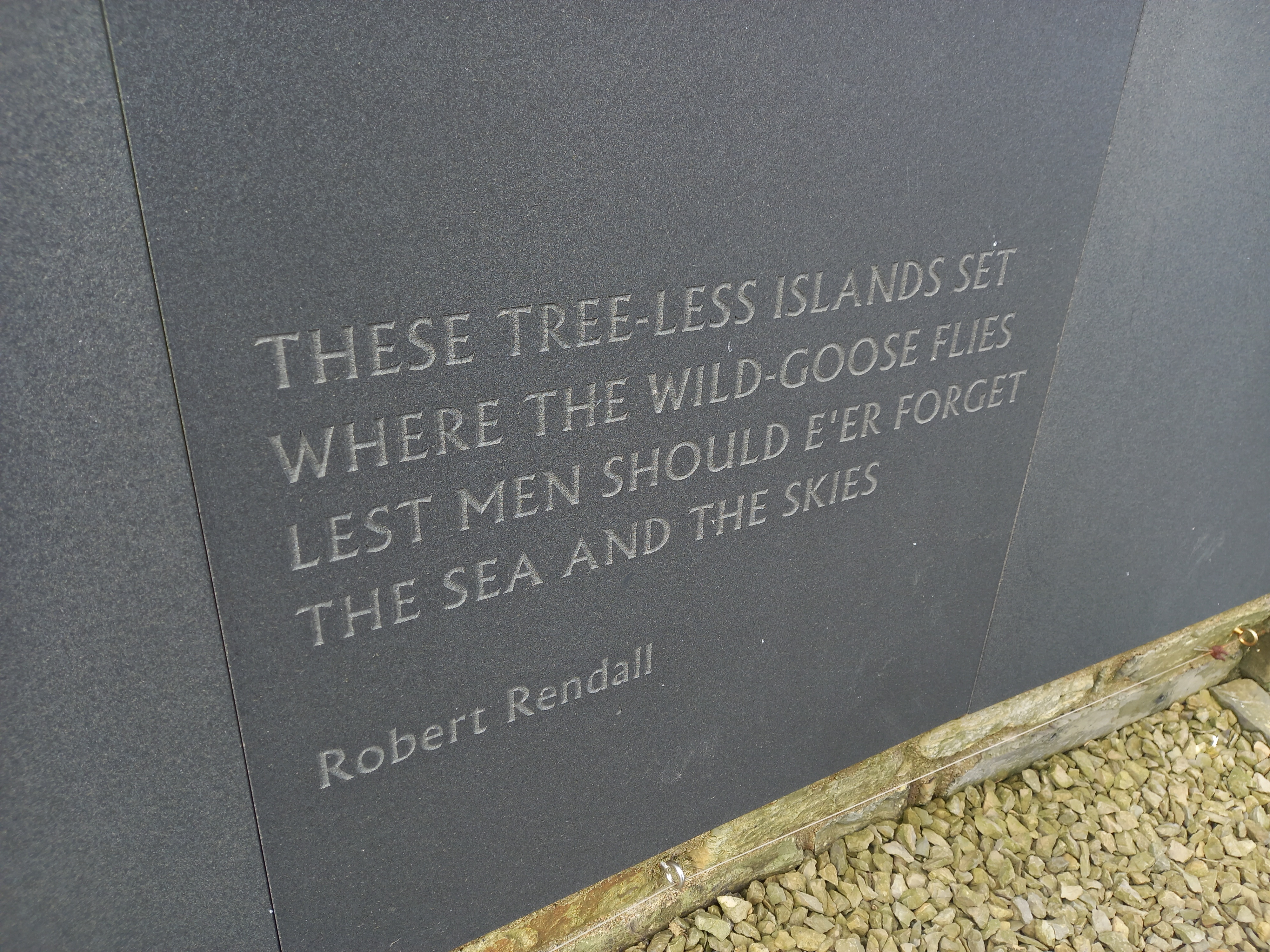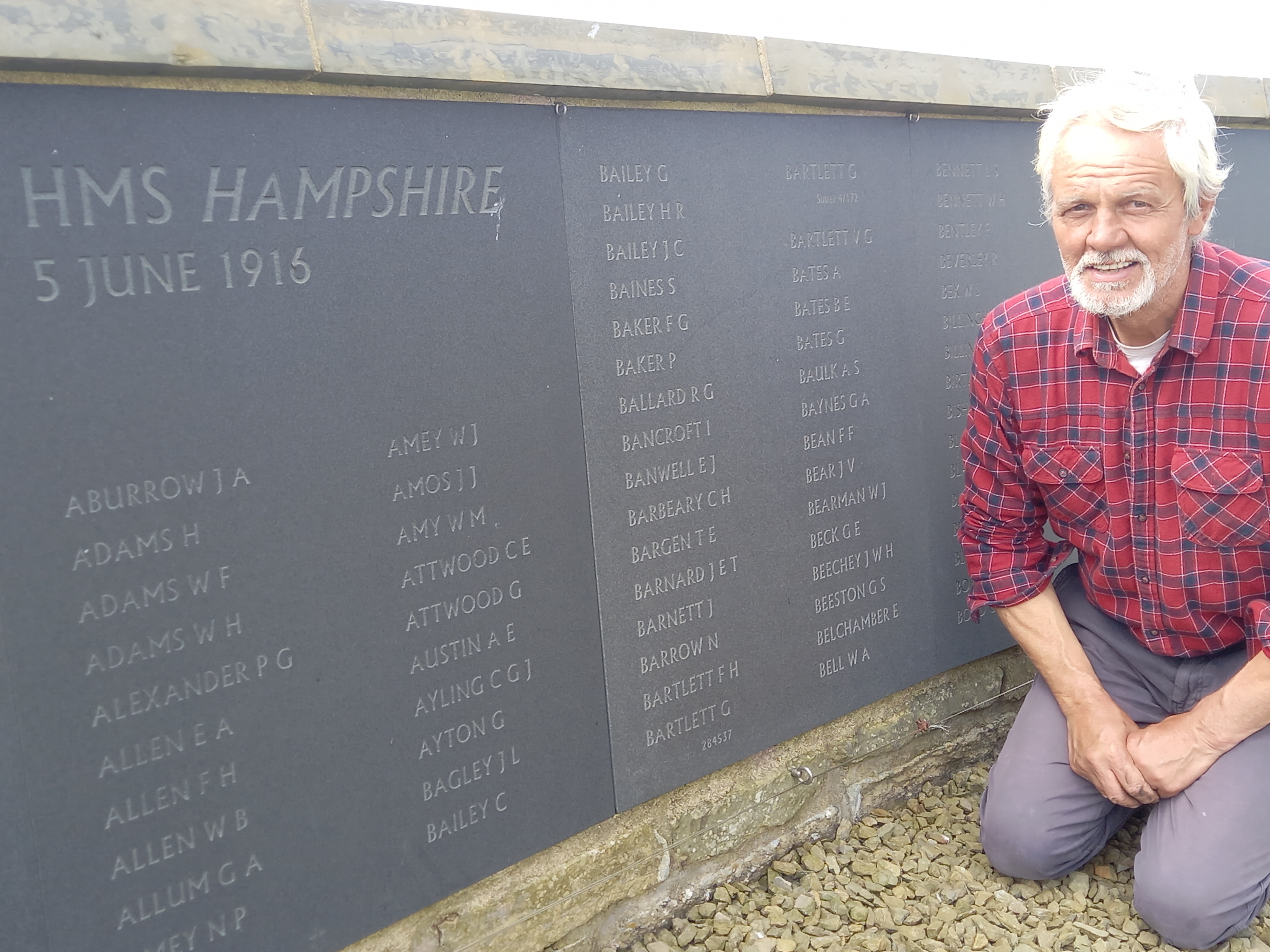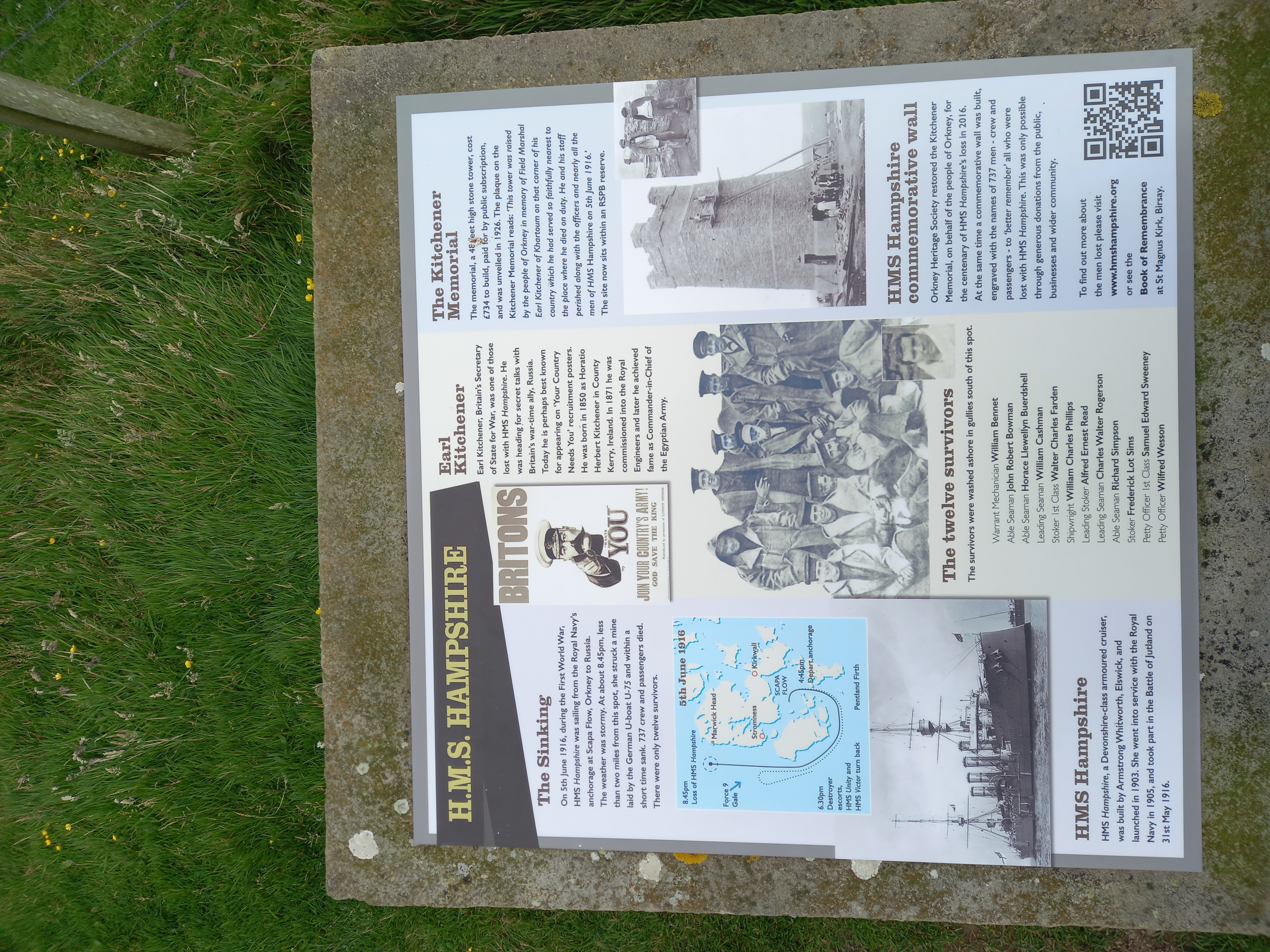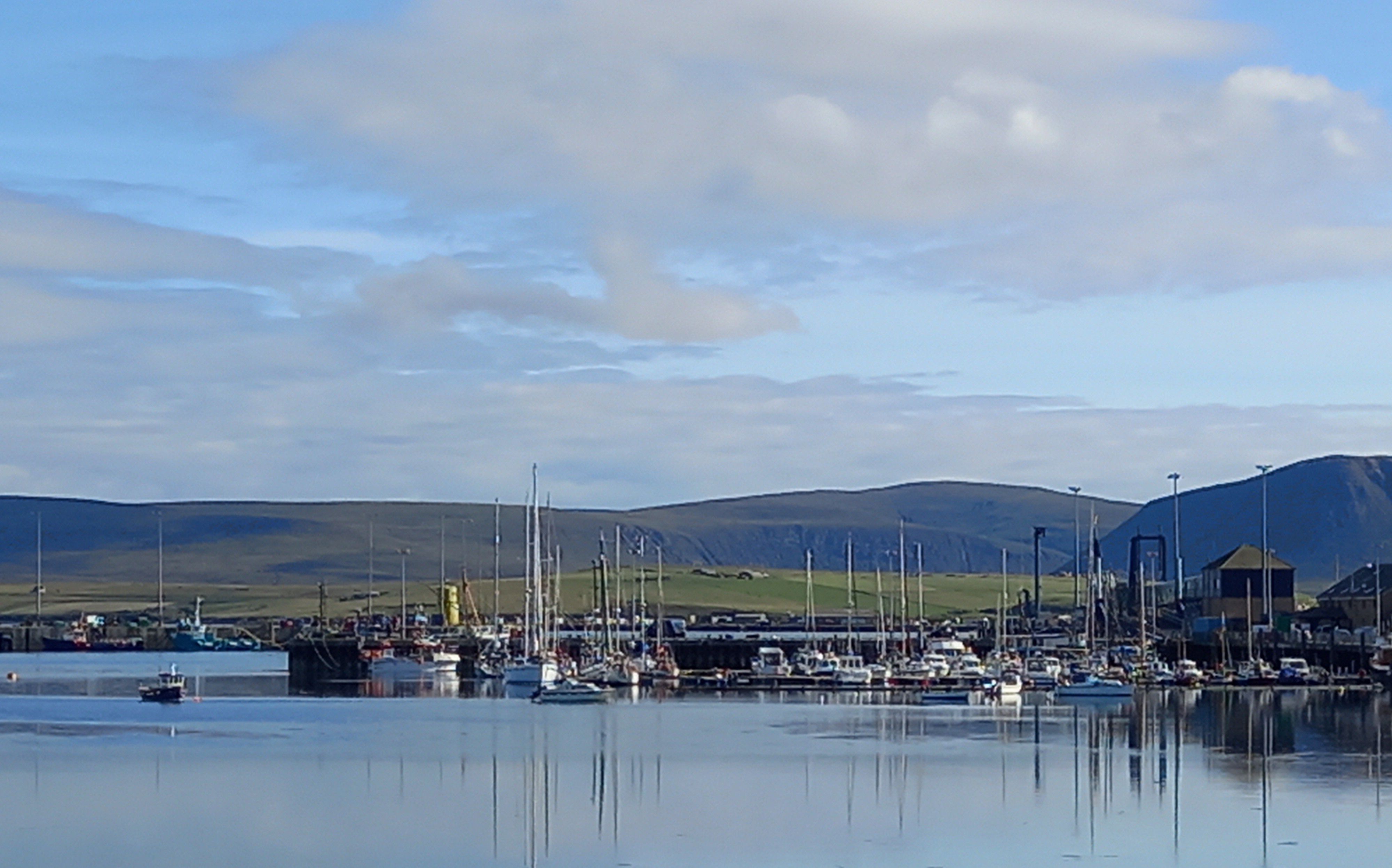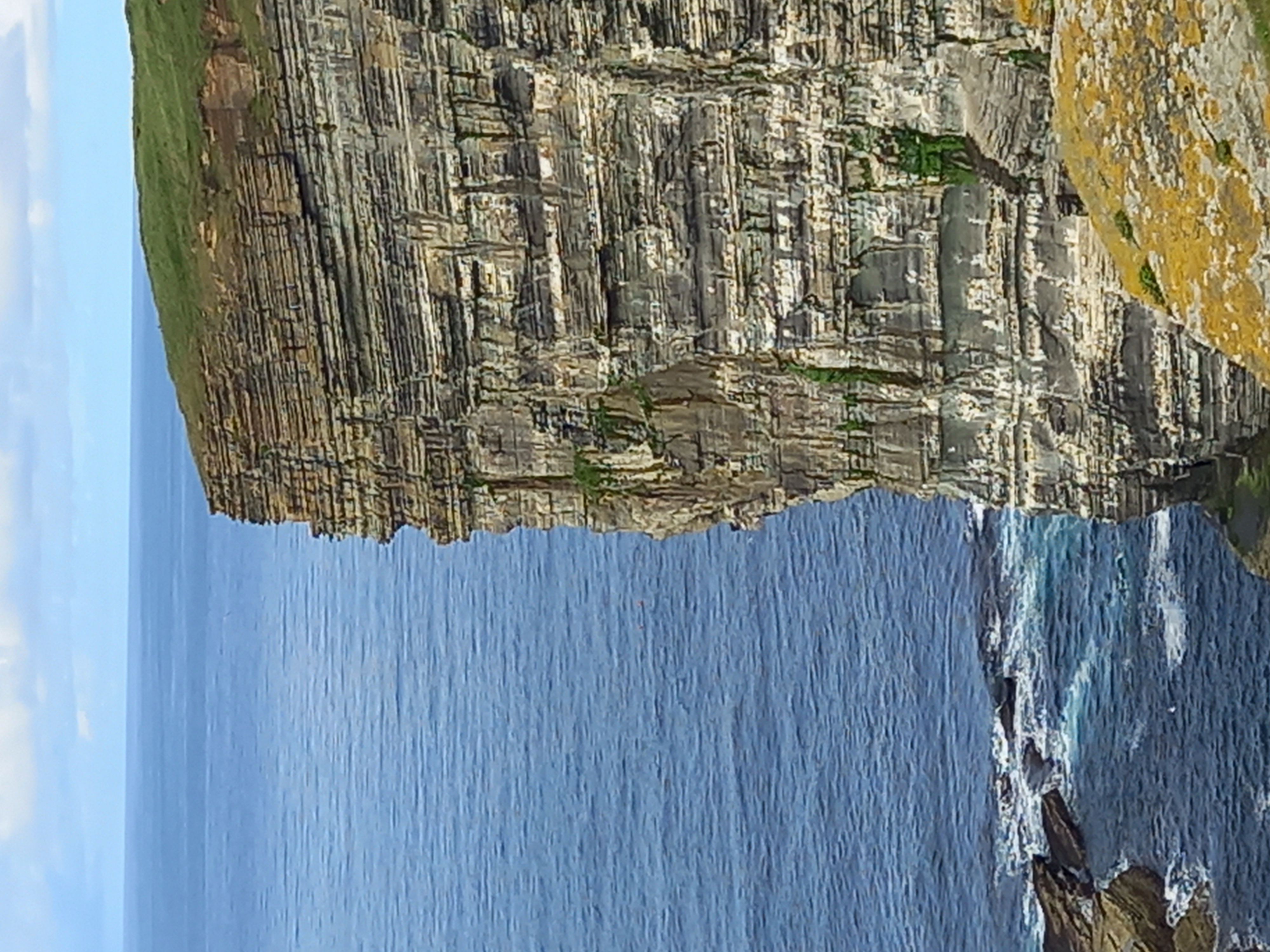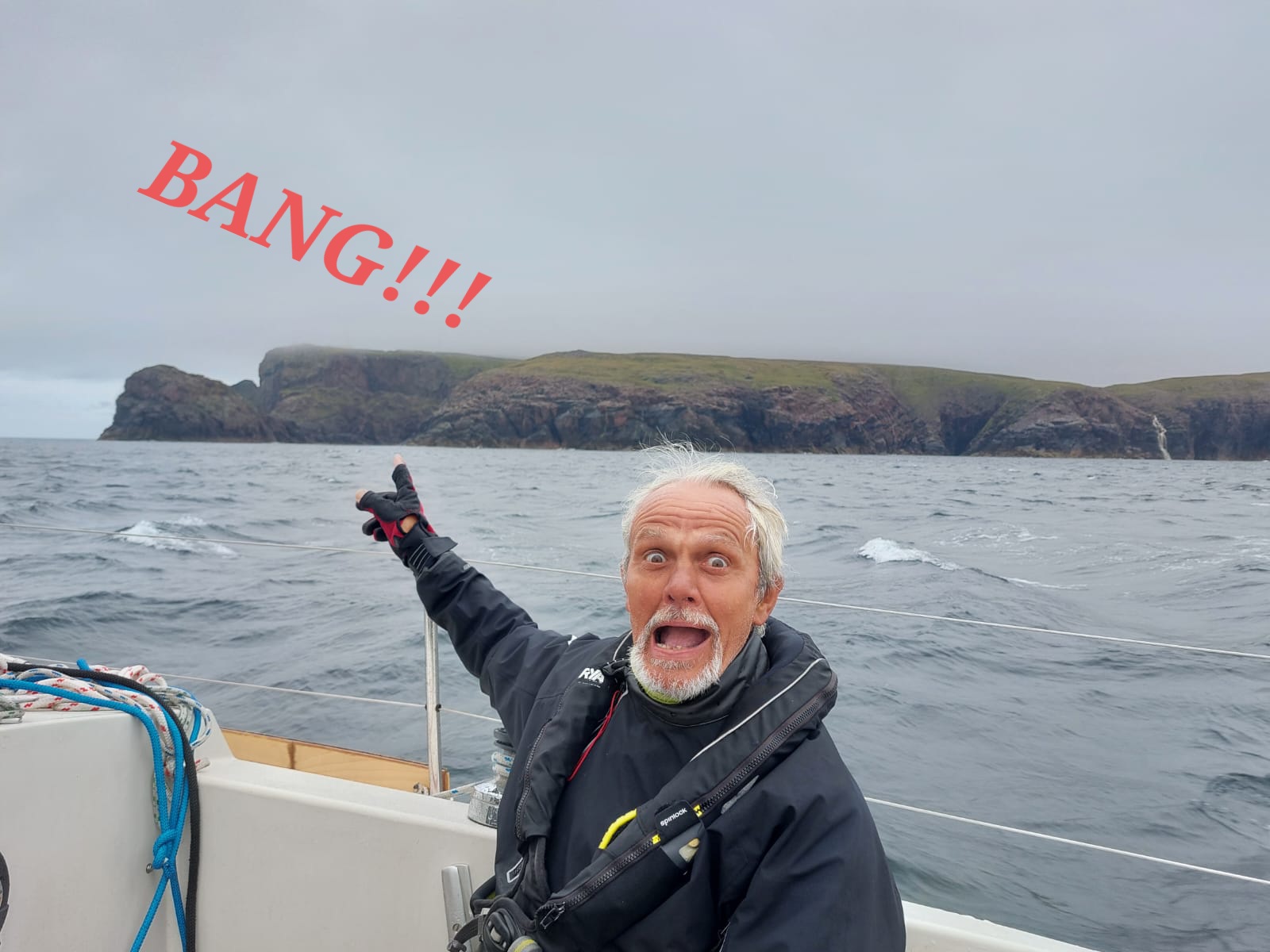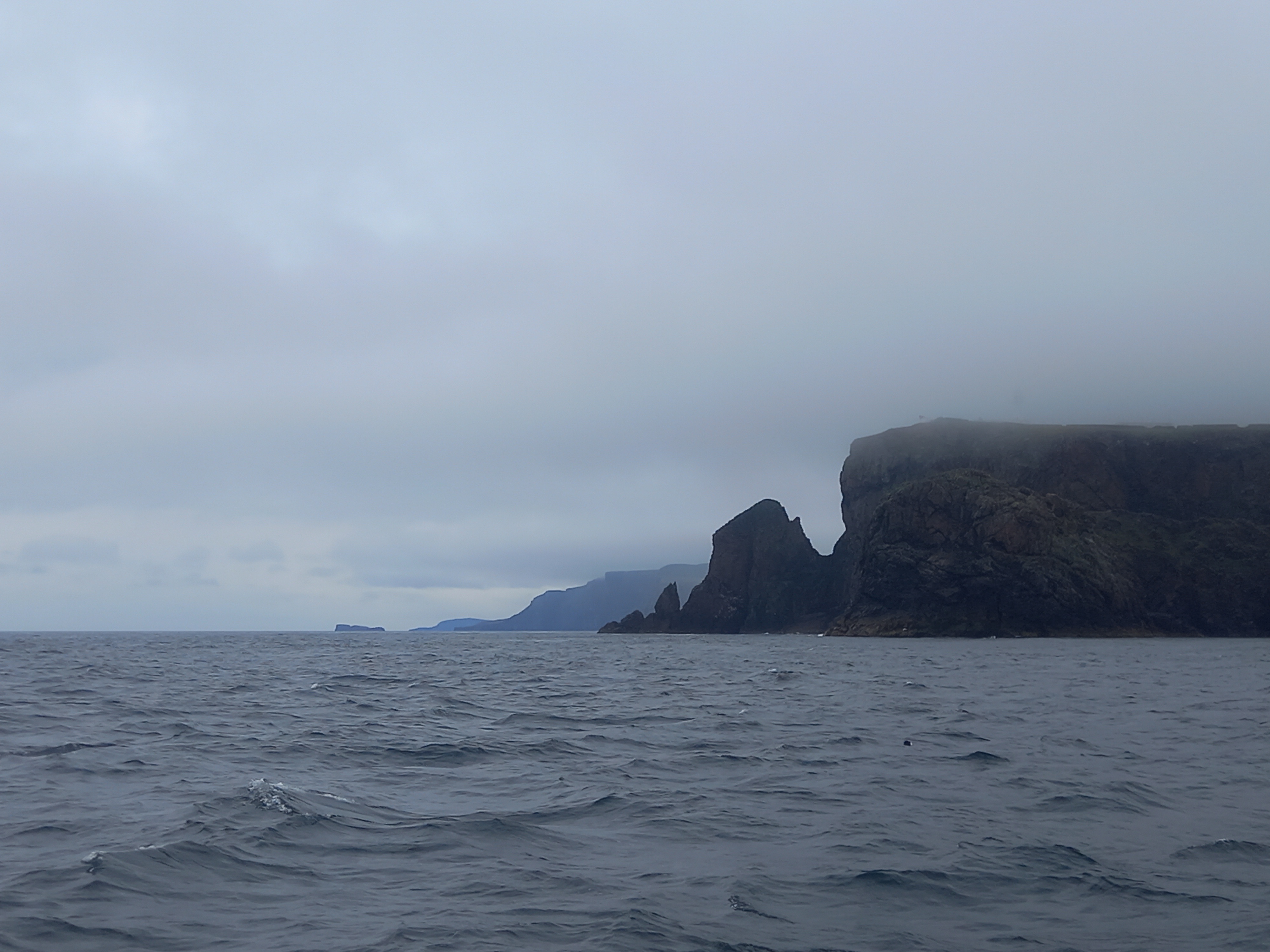The rain cleared as we rounded Cape Wrath and we reminisced about the hours we had spent in a variety of ships bombarding Scotland with 4.5 inch shells... This was a quiet ‘rounding’ though and the only highlight of an increasingly wet and dreary day as we sailed and, as the wind died, motored towards the Orkneys and Stromness harbour.
Apart from guillemots, fulmars, gannets and a few dolphins we saw nothing until the Isle of Hoy appeared over the horizon in the early evening. We could just about make out the Old Man of Hoy and then we were into the sound between the islands and frustratingly fighting the tide as we headed up to Stromness harbour. It was very late evening by the time we were all secure in the marina, very wet and cold! Overnight the wind increased from the north and we spent most of a very cold Monday trying to warm up despite just about every cafe and bar along the main street being closed; initial impressions of Stromness were grey, damp and not very positive! The laundry facilities in the ferry terminal were good though and a good meal in the Ferry Inn surrounded by recreational divers
Over the following few days the weather improved and we hired bikes which enabled us to explore. Despite the hills and slipping bike chains we managed to visit the WW2 Naval Air Station, HMS TERN, the Brough of Birdsay, Birsay Earl’s Palace and we chuckled in a rather immature fashion at the village named Twatt. The highlight of the day was undoubtedly a visit to Marwick Head and the monuments to Lord Kitchener and HMS Hampshire.
On 5 June 1916, HMS Hampshire sailed from Scapa Flow, hit a German laid mine and sank with the loss of 737 men, amongst them was my Great Uncle, Engine Room Artificer, 4th Class Norman Barrow.
Norman was a Bournemouth boy who joined the Royal Navy as an artificer aged 18. A quick internet search confirms that he trained at HMS FISGARD in Portsmouth and married Ivy Smith, from Mile End, Portsmouth when he was 19. I’m not sure where or when Norman would have joined HAMPSHIRE but he would have been on board as she joined the Grand Fleet in Scapa Flow. HAMPSHIRE was one of 151 British warships that took part in the Battle of Jutland. She survived unscathed, returned to the fleet anchorage at Scapa Flow and, less than a week later, she was directed to take Lord Kitchener to Russia for secret war negotiations. She sailed in the afternoon of Monday 5 June 1916 into a violent storm and in the early evening struck a mine that had been laid by a German submarine. HAMPSHIRE was holed forward of the bridge and sank within 15 minute with only 12 survivors.
The Kitchener memorial was erected ten years after the sinking and was paid for by the public and in particular the population of Orkney. To commemorate the centenary of the sinking, the Orkney Heritage Society raised funds to restore the memorial and also erect a new memorial naming all those who died on board. The memorials are located in a stunning cliff top location looking out across the site of the sinking and I found it very moving to find Norman’s name alongside those of his shipmates. I am very grateful to those Orcadians who did so much to ensure that these men are remembered.
